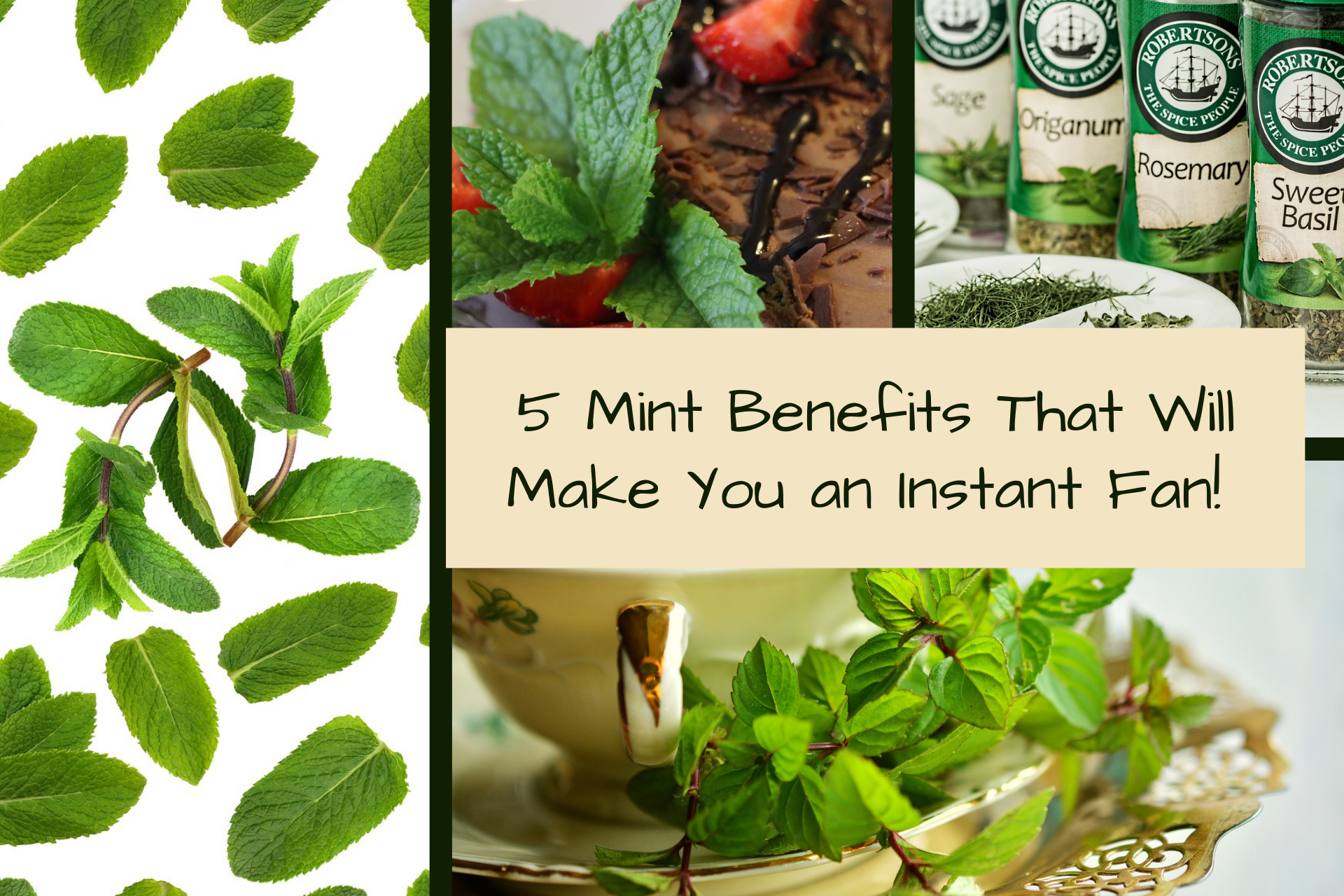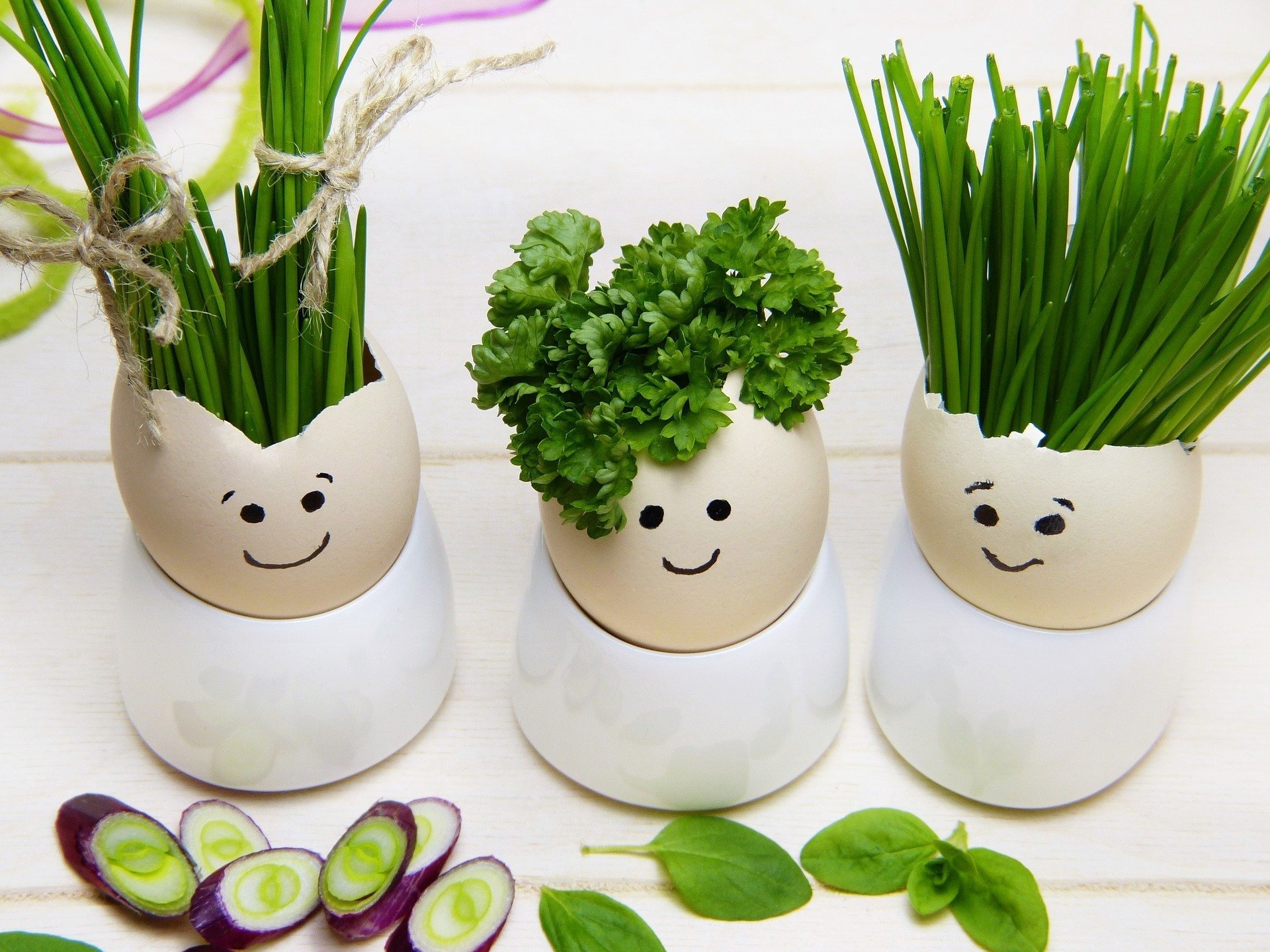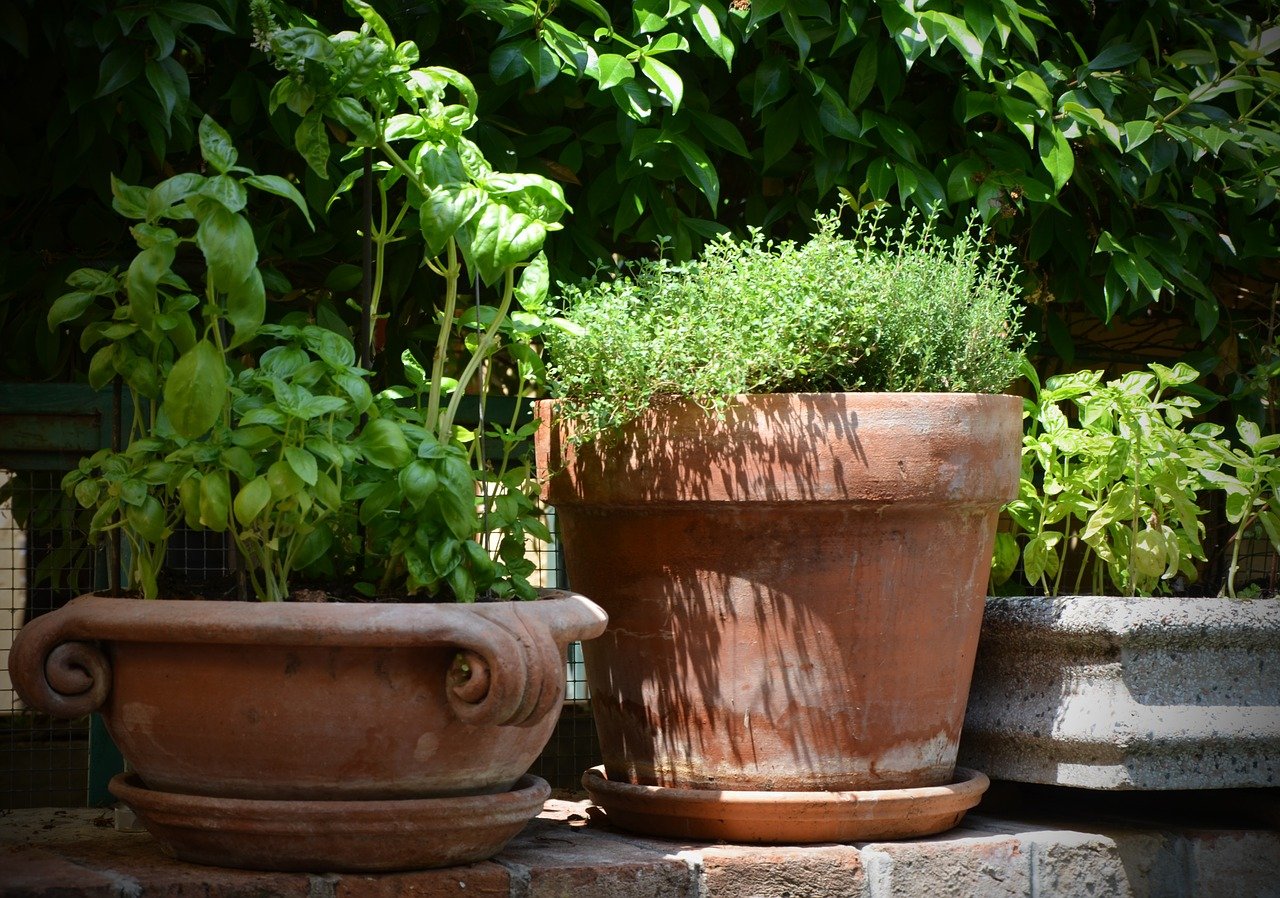

I don’t know about you, but for the longest time, I really didn’t like the taste of mint. However, having recently developed what I can only describe as a “chronic” cough related to my allergies, I’ve come to appreciate this beneficial herb (I’ll tell you why in a moment). Check out the mint benefits I’ve outlined below…I think you might become a fan too!
Mint has been used to treat everything from bad breath to stomach and respiratory issues for centuries. Long before it became “cool” (pun intended), our ancestors were benefiting from this herb in numerous ways. Today, you can find it everywhere: it’s in gum, cleansers, tea, and even ice cream.
So, why the craze for mint? What’s so special about this particular plant that warrants all this attention?
Please note, this post contains affiliate links. If you click through and make a purchase, I receive a small commission. This doesn’t cost you anything, but it makes me happy…so happy that I might even go out and hug a tree! Thanks for your support! Read my Disclaimer for additional information.


Mint Family Herbs
Most people probably don’t realize that the mint family, Lamiaceae, consists of hundreds of different plants, many of which don’t smell or taste “minty” at all. The following herbs are part of the mint family:
Basil
Oregano
Rosemary
Sage
Thyme
Lavender
Catnip
Lemon Balm
Self-heal
Marjoram

One very obvious thing all these herbs have in common is their scent. Most mint family herbs contain aromatic oils that make them perfect for use as seasoning and perfumes.
The mints we traditionally think of come in many different varieties. Here are just a few of the most popular types of mint:
Peppermint
Spearmint
Apple Mint
Pineapple Mint
Ginger Mint
Orange Mint
Chocolate Mint
Mint Benefits
Now that you know where it comes from, it’s time to consider the many health benefits of mint. Here are my top six mint benefits, in no particular order:
Mint as a Respiratory Aid
When it comes to the health benefits of mint, I’ve found it most useful for me when inhaled (via a diffuser). Along with blooming flowers and pollen in the air (my car is green in the spring – it’s black the rest of the year), spring usually brings an allergy-induced cough and general congestion for my family. I add a few drops of peppermint essential oil to the diffusers in my children’s bedrooms at night, and they sleep soundly.
I wear an essential oil diffuser necklace whenever I’m having trouble with my cough. You can see some examples of these handy (and elegant) devices below. Most are inexpensive, and each necklace comes with several reusable, absorbent pads (these are what you drop the oil onto). Not only do I have the pleasant scent of mint right under my nose, but my cough subsides and I feel more alert throughout the day.
So, why does this work? Well, mint plants contain rosmarinic acid, which is known for its antioxidant and anti-inflammatory effects. This acid combined with menthol (another common component in the mint family) helps relieve congestion and relax the bronchial tubes and lungs. Studies have even shown that inhaling menthol rather than a prescribed aerosol-based inhaler can be more effective (and eco-friendly) in treating chronic coughs.


Mint Freshens Breath and Kills Bacteria
You probably already knew about the “freshening breath” part of that statement, what with all the mint-flavored gum and breath mints on the market today. But did you know that in its purest form (either mint leaves or mint essential oil), it has a strong antibacterial component that scientists continue to learn more about every year?
In particular, researchers are studying the antibacterial compounds found in two of the essential oils associated with mint plants: carvone and limonene. These are believed to help reduce the effects of harmful bacteria that may occur in your gut or in contaminated food you eat. These oils may even be used to protect against foodborne illness in conjunction with proper food storage techniques.
So, next time you’re reaching for a breath mint, consider going for something a little more potent: chew a few mint leaves instead. Not only will your breath improve, but you may be helping out your gut as well!
Mint is Your Belly's Best Friend
Speaking of your gut, did you know that taking peppermint oil with your meals is a great way to prevent indigestion? When it comes to gut health, mint essential oil benefits far outweigh those of over-the-counter medications…at least in my humble opinion (please remember, I am not a doctor). While I don’t use peppermint oil for that purpose, my go-to for most minor indigestion issues is a peppermint Lifesaver candy.
For more persistent symptoms, ingesting peppermint oil with food can help it pass more quickly through the digestive tract by increasing bile secretion and flow, thus reducing the chances of indigestion. Clinical studies have shown that a combination of peppermint oil and caraway oil (in capsule form) can be just as effective in treating indigestion and stomach pain as some prescription medications. Mint may also help keep your good cholesterol up and your bad cholesterol down, as well as relieve diarrhea and motion sickness.
If you plan to give mint a try, I suggest either ingesting capsules with each meal for greater potency or cooking with fresh mint whenever you can. You can also add it to a warm cup of tea after dinner.

Before ingesting any essential oil, make sure it is diluted with a carrier oil for safety. This applies to essential oils that are used topically as well. You can do more harm than good if you don’t follow this general rule!

Mint Benefits for Breastfeeding Moms
While some mints have a negative effect when placed directly on your skin, there is a way to use mint safely to treat some skin issues. Breastfeeding moms may find comfort in applying mint to help alleviate cracked and sore nipples. However, it’s important to note that when using mint essential oil for this purpose, you must dilute it in water or gel first.
Studies have shown that applying this mixture after each feeding session can help prevent nipple pain and areola cracks more effectively than expressed breast milk, which many women use as a natural skin protectant. Mint oil has antiseptic qualities, making it an obvious choice for the mother who wants to stick to natural skin cleansers. It also soothes pain and aids in recovery from infection or itchiness.
Mint’s antipruritic properties make it an excellent treatment for insect bites as well. Many species of biting insects dislike the strong smell of mint, so it’s sometimes used in conjunction with citronella to repel them. Mint helps cool the skin, which reduces the urge to scratch. Don’t forget the natural anti-inflammatory nature of this wonder herb either! It can help reduce swelling from insect bites or otherwise damaged skin.
One valuable piece of information for breastfeeding moms who are considering using mint as a skin protectant: don’t chew leaves of mint family herbs while breastfeeding as they may reduce your milk supply (unless you’re trying to do so). Sage and peppermint are the worst offenders in this case.
How to Grow Mint
It you want to grow mint to use for cooking, you’re in luck! It’s really easy to grow…even I can’t kill it, and I’m pretty good at killing green things. I know that sounds contradictory to everything you’ve read on my website, but it’s true. I love planting herbs every spring, but they don’t always love me back.
Now that I’ve admitted my nature weakness, let’s talk a bit more about growing mint. This tender herb is really good at spreading out and taking over gardens, kicking your other plants to the curb, as it were. Some mint family herbs have woody stems, such as lavender and sage, but others are more viney in nature. Gardeners have more problems with spearmint plants spreading like wildfire; peppermint pretty much keeps to itself.
Growing mint in your garden can help deter unwanted insects like ants and flies, while attracting more beneficial ones like honeybees (mint helps clear out mites that invade bee hives). However, if you want to ensure your other plants have a chance at surviving, you should consider planting your mint in containers. You can still have it in your garden – just bury the planter in order to restrict it to that one location.
The other option is to grow mint inside in small planters in a sunny kitchen window (a.k.a. a kitchen garden). Mints like peppermint and spearmint are perennials and will produce leaves all year long if kept inside where it’s not too cold.
Learning how to harvest mint is simple: just clip the leaves at the base of the stem (as you need them) and add to your favorite food or drink. Extra leaves can be stored in a plastic bag in your refrigerator for up to a week. After that, they’ll wilt and won’t be as potent.
Mint doesn’t seed well, so save yourself a lot of frustration and buy starter plants from your local nursery.


Where Can You Find Mint Recipes?
Here are a few sites that feature recipes using mint:
If you’re worried about your diet…don’t be! Toss all the mint leaves you want into your salads or meat dishes (for those keto dieters watching their carbs). Mint adds no extra calories or sugar to meals or drinks.
Not only is mint high in antioxidants, but it also contains a fair amount of fiber, vitamin A, iron, manganese, and folate. The vitamin A found in mint plants can help protect the cells in your body from damage by free radicals, which are known to harm organs. It may also aid in reducing your risk of chronic diseases like diabetes and heart disease.
So, what have we gathered from this short list of mint benefits? Well, to put it simply…
Mint is amazing!
If you’ve read any of my other articles, you know I love trees…but mint is definitely in my top 10 as well. I hope this information is helpful. If you’d like to share how you use mint, drop me a line. I’d love to hear from you!
Go hug some MINT…you’ll smell great!

Related Articles
If you enjoyed this article, you may wish to read these as well!

Herb Gardens in the Classroom
I don’t know about you, but most of the teachers I’ve met have limited classroom space. This makes finding a place to set up a small herb garden a serious stretch. Luckily, plants don’t mind hanging from the ceiling or a strategically-placed curtain rod by the window. This post will give you some ideas on how and where to place an herb garden in your classroom...

Craft a Clay Leaf Bowl
Have you ever noticed how many different varieties of leaves exist out there in the wilds of your neighborhood? Don’t worry if your answer to that question is “no, not really.” Most people don’t pay much attention to leaves…until they have to rake them up, that is! Well, with this simple, clay leaf bowl project, you’ll definitely start noticing the beauty of leaves...

DIY Garden Label Stakes
So, as much as I would love to brag that I’m a natural green thumb, that would be a little white lie. To put it simply, I have a tendency to kill green things. It’s sad, but true. Don’t get me wrong, I love planting flowers, herbs, and vegetables. They just don’t love staying alive every time I do. Honestly, I think I enjoy crafting DIY garden label stakes and other outdoor decorations more than tending the actual garden...


